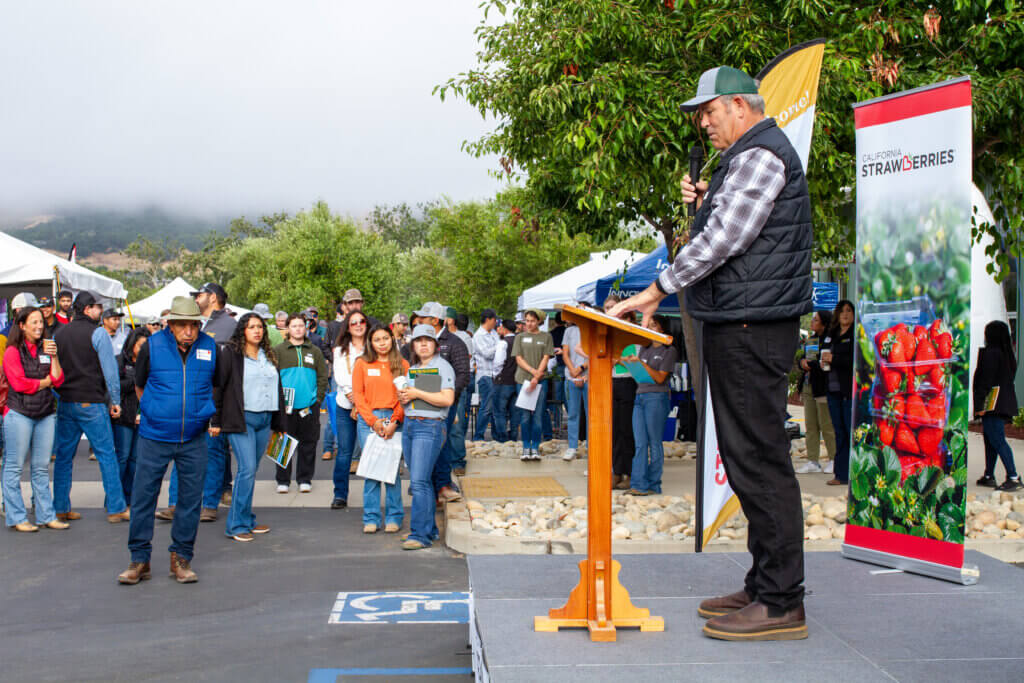
Did you know that California strawberry growers invest millions of dollars each year in research to improve the sustainability practices on their farms? Ongoing partnerships like the Strawberry Center partnership between the California Strawberry Commission and Cal Poly University offer growers effective solutions to manage pests and disease while also increasing efficiency and workforce safety.
Recently, the Strawberry Center hosted its seventh annual Field Day event drawing nearly 500 California strawberry growers, shippers, processors, researchers and agricultural stakeholders to hear from students, researchers and California Strawberry Commission staff regarding the latest research and innovations taking place at the Center.
As the nation’s leader in strawberry production – about 90% of strawberries are grown in California – it is important to growers to identify more and more non-chemical ways to farm strawberries.
Take the bug vacuum for example, which has been adopted by over half of the industry and can save an estimated $20 million per year. It’s just one of the projects that have come out of the Strawberry Center in recent years. And, it does exactly what the name implies – it sucks up harmful bugs from the plants, which could help reduce pesticide use (watch it in action here!).
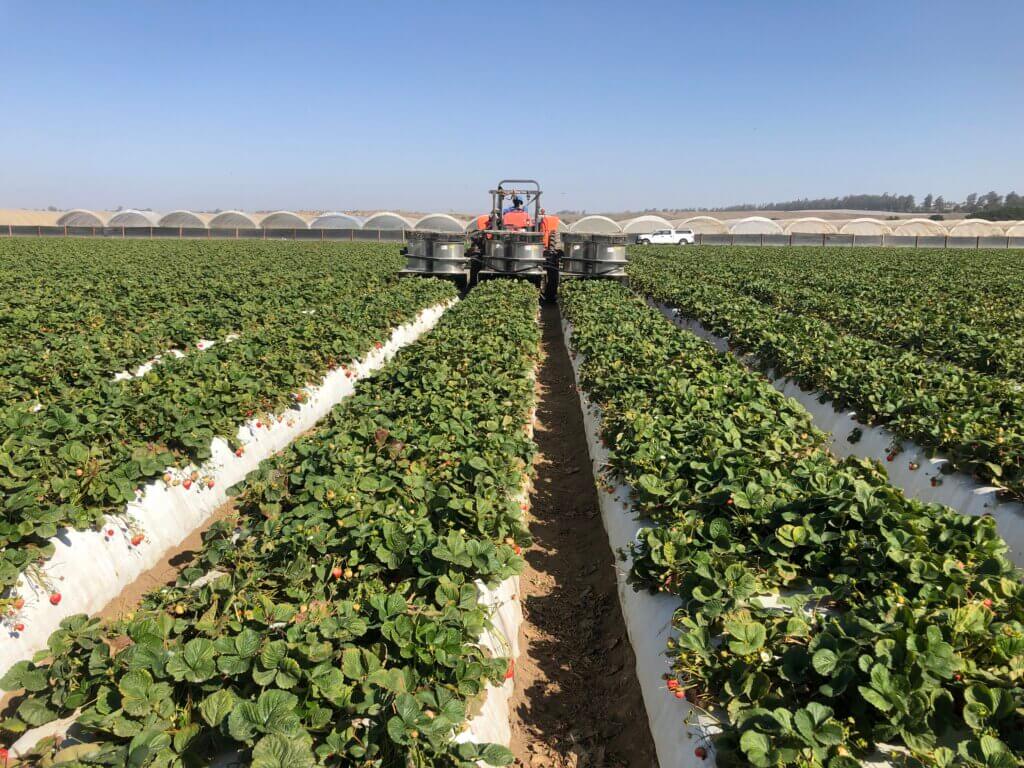
Another issue faced by growers comes from soilborne diseases, like powdery mildew, which can infect plants and stop the plant from producing strawberries. Researchers have been exploring a non-chemical way to combat this disease using UV-C light. While research is ongoing, promising results have been showing its effectiveness at reducing disease. The UV-C is used at night and damages the pathogen, which, in the absence of sunlight, cannot repair itself.
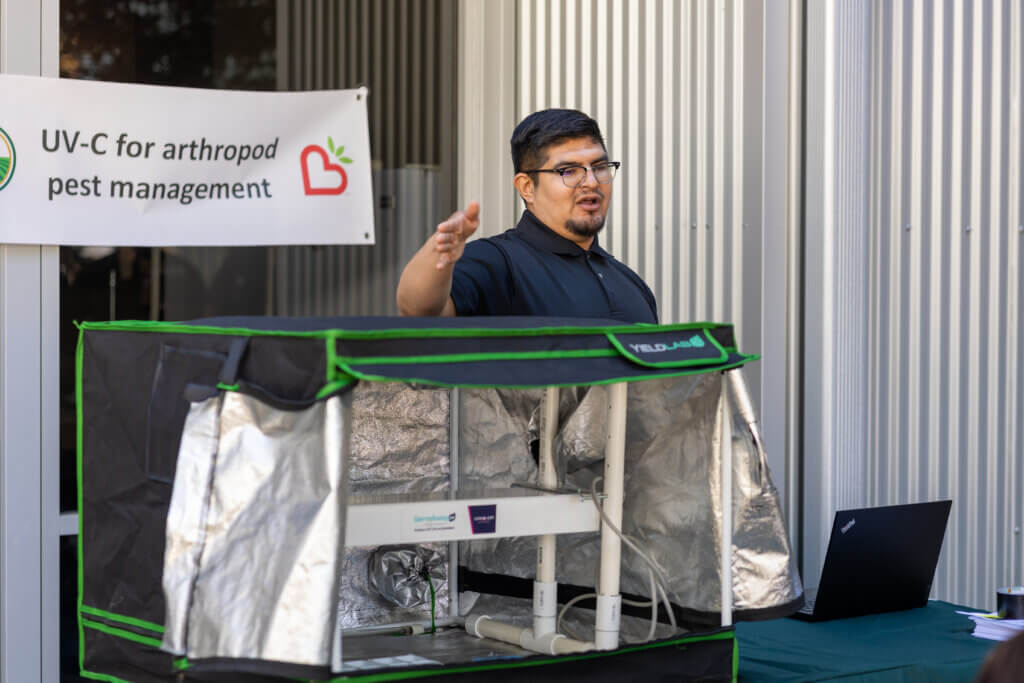
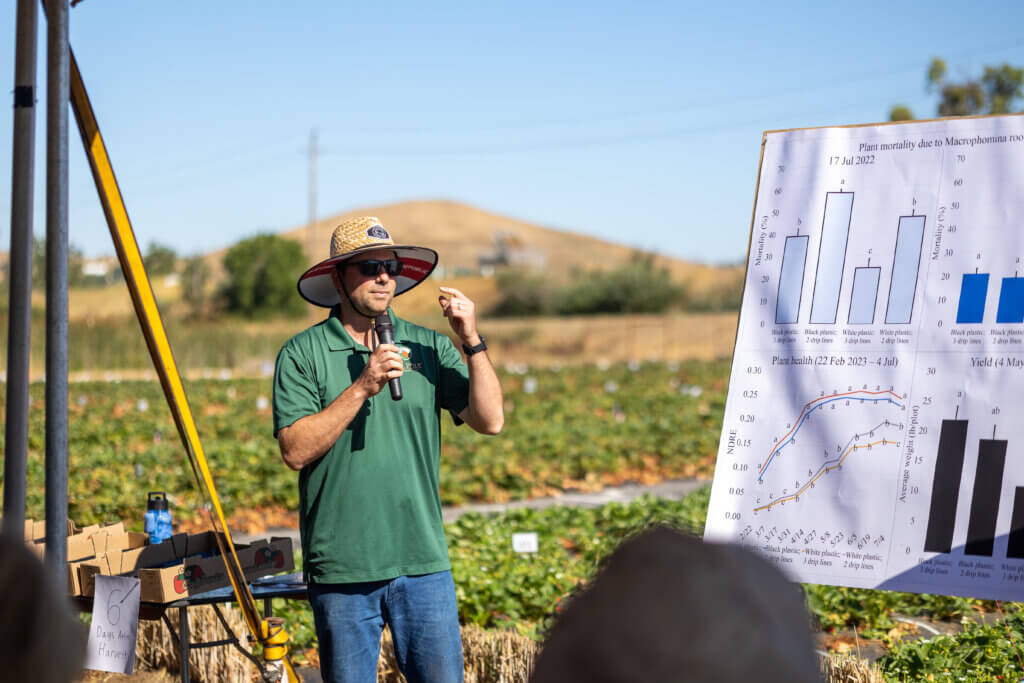
During Field Day, Cal Poly students also led attendees through promising new plant pathology research that could help growers better detect issues in the field and develop strawberry varieties that are resistant to disease. Projects looked at different types of cover crops and mulch, optimum planting dates and what effect soil temperature and moisture levels had on disease.
In addition to the research coming out of Field Day, many California strawberry farmers are still implementing tried-and-true farming practices to manage pests and reduce pesticide use including introducing ladybugs and other “good” bugs into fields to eat pest insects and planting border crops like cilantro to attract beneficial insects. Growers also practice responsible water management practices like drip irrigation in fields. One in four California strawberry growers grow both conventional and organic strawberries and the state leads the rest of the world in organic strawberry production.
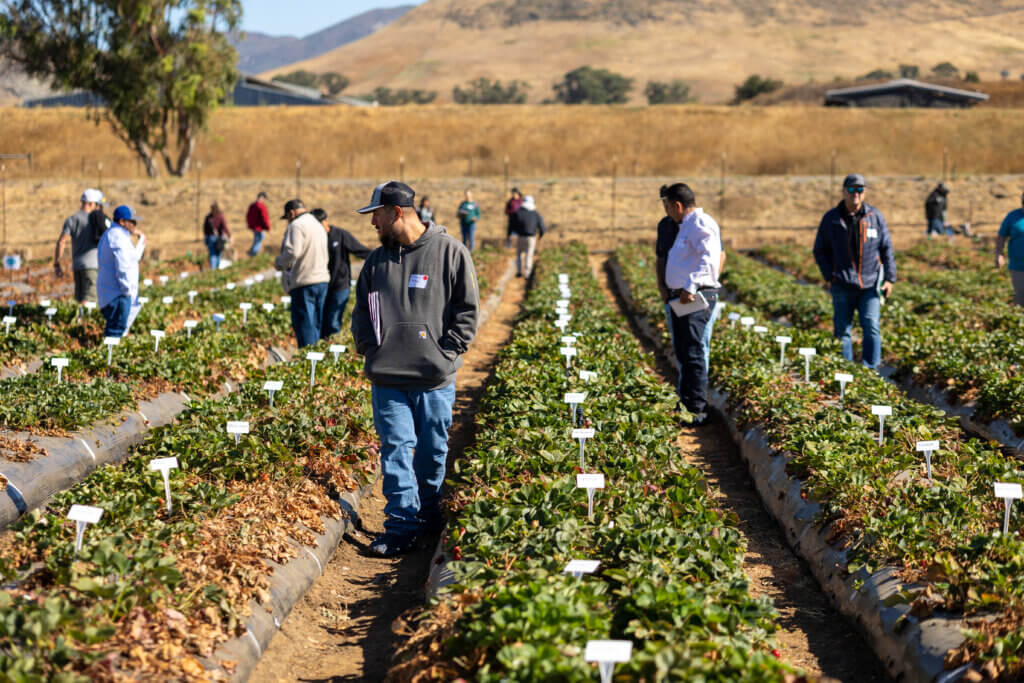
Check out our Growing for a Sustainable Future page for more information on the California strawberry industry’s sustainability practices.
